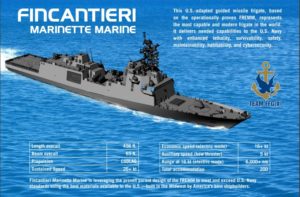
Secretary of the Navy Kenneth Braithwaite on Wednesday confirmed the service plans to procure more than 20 new Constellation-class (FFG-62) frigates, suggested selling the hull to allied states akin to the F-35, and explained how a new light carrier could be useful. The Navy has been planning to purchase a total of 20 Constellation-class frigates, but “we’ll build more than that,” Braithwaite said during a U.S. Navy Memorial SITREP speaker series event. The secretary, in part, fleshed out some details…

 By
By 











